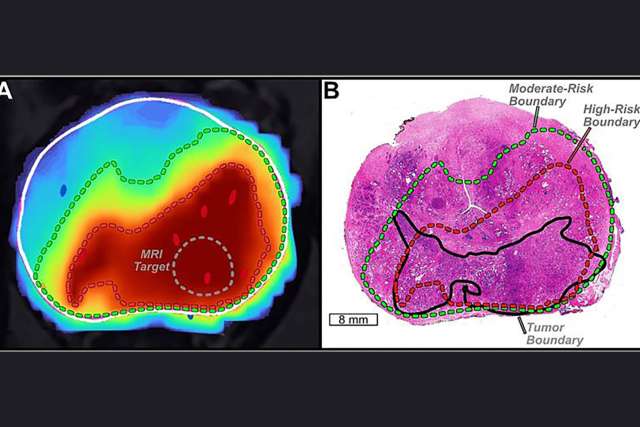A UCLA Health surgical team has performed the first-in-human bladder transplant.
The surgery was successfully completed at Ronald Reagan UCLA Medical Center on May 4, 2025. The team was led by Dr. Nima Nassiri, a urologic transplant surgeon and director of the UCLA Vascularized Composite Bladder Allograft Transplant Program, with assistance from Dr. Inderbir Gill, founding executive director of USC Urology.
"Bladder transplantation has been Dr. Nassiri's principal academic focus since we recruited him to the UCLA faculty several years ago," said Dr. Mark Litwin, UCLA Urology Chair, "It is incredibly gratifying to see him take this work from the laboratory to human patients at UCLA, which operates the busiest and most successful solid-organ transplant program in the western United States."
“This first attempt at bladder transplantation has been over four years in the making,” Nassiri said. “For the appropriately selected patient, it is exciting to be able to offer a new potential option.”
The patient had lost most of his bladder during a tumor removal, leaving the remainder too small and compromised to work. Both of his kidneys were also subsequently removed due to renal cancer in the setting of pre-existing end-stage kidney disease. As a result, he was on dialysis for seven years.
The biggest risks of organ transplantation are the body’s potential rejection of the organ and side-effects caused by the mandatory immune suppressing drugs given to prevent organ rejection.
“Because of the need for long-term immunosuppression, the best current candidates are those who are already either on immunosuppression or have an imminent need for it,” Nassiri said.
Nassiri, formerly a urology resident with the Keck School and now assistant professor of urology and kidney transplantation at UCLA, and Gill worked together for several years at the Keck School to develop the new surgical technique, design clinical trials and secure the necessary regulatory approvals.
Nassiri and Gill collaborated for several years to develop the surgical technique. Numerous pre-clinical procedures were performed at USC and OneLegacy, Southern California’s organ procurement organization, to prepare for the first human bladder transplant.
The recovery of the kidney and bladder from the donor was performed at OneLegacy. All parts of the procedure, including surgery and post-surgical monitoring during the transplantation, were aligned with the highest current clinical and research standards.
During the complex procedure, the surgeons transplanted the donated kidney, following that with the bladder. The new kidney was then connected to the new bladder using the technique that Nassiri and Gill pioneered. The entire procedure lasted approximately eight hours.
“The kidney immediately made a large volume of urine, and the patient’s kidney function improved immediately,” Nassiri said. “There was no need for any dialysis after surgery, and the urine drained properly into the new bladder.”
Millions of people around the globe experience some degree of bladder disease and dysfunction. Some develop terminal bladders that are either non-functioning and/or cause constant pain, repeated infections and other complications. Current treatment for severe terminal cases of bladder dysfunction or a bladder that has been removed due to various conditions includes replacement or augmentation of the urinary reservoir. These surgeries use a portion of a patient’s intestine to create a new bladder or a pathway for the urine to exit the body.
While these surgeries can be effective, they come with many short-and long-term risks that compromise a patient’s health such as internal bleeding, bacterial infection and digestive issues.
“A bladder transplant, on the other hand, results in a more normal urinary reservoir, and may circumvent some short- and long-term issues associated with using the intestine,” Nassiri said.
As a first-in-human attempt, there are naturally many unknowns associated with the procedure, such as how well the transplanted bladder will function immediately and over time, and how much immunosuppression will ultimately be needed.
Bladder transplants have not been done previously, in part because of the complicated vascular structure of the pelvic area and the technical complexity of the procedure. As part of the research and development stage, Nassiri and Gill successfully completed numerous practice transplantation surgeries at Keck Medical Center of USC, including the first-ever robotic bladder retrievals and successful robotic transplantations in five recently deceased donors with cardiac function maintained on ventilator support.
The two surgeons also undertook several non-robotic trial runs of bladder recovery at OneLegacy, allowing them to perfect the technique while working closely with multi-disciplinary surgical teams.
The bladder is strictly within the domain of urologists. At UCLA, kidney transplantation is also housed within the department of urology. This is why the combined kidney and bladder transplant was ultimately performed at UCLA, which has the necessary infrastructure, clinical expertise, and multidisciplinary support to carry out the procedure and manage the patient from pre-transplant evaluation through post-transplant care, all within the one department.
The procedure was performed as part of a UCLA clinical trial. Nassiri hopes to perform more bladder transplants in the near future.
UCLA Urology has long been at the frontier of urologic transplantation, with pioneering research in kidney transplantation and now, bladder transplantation.




